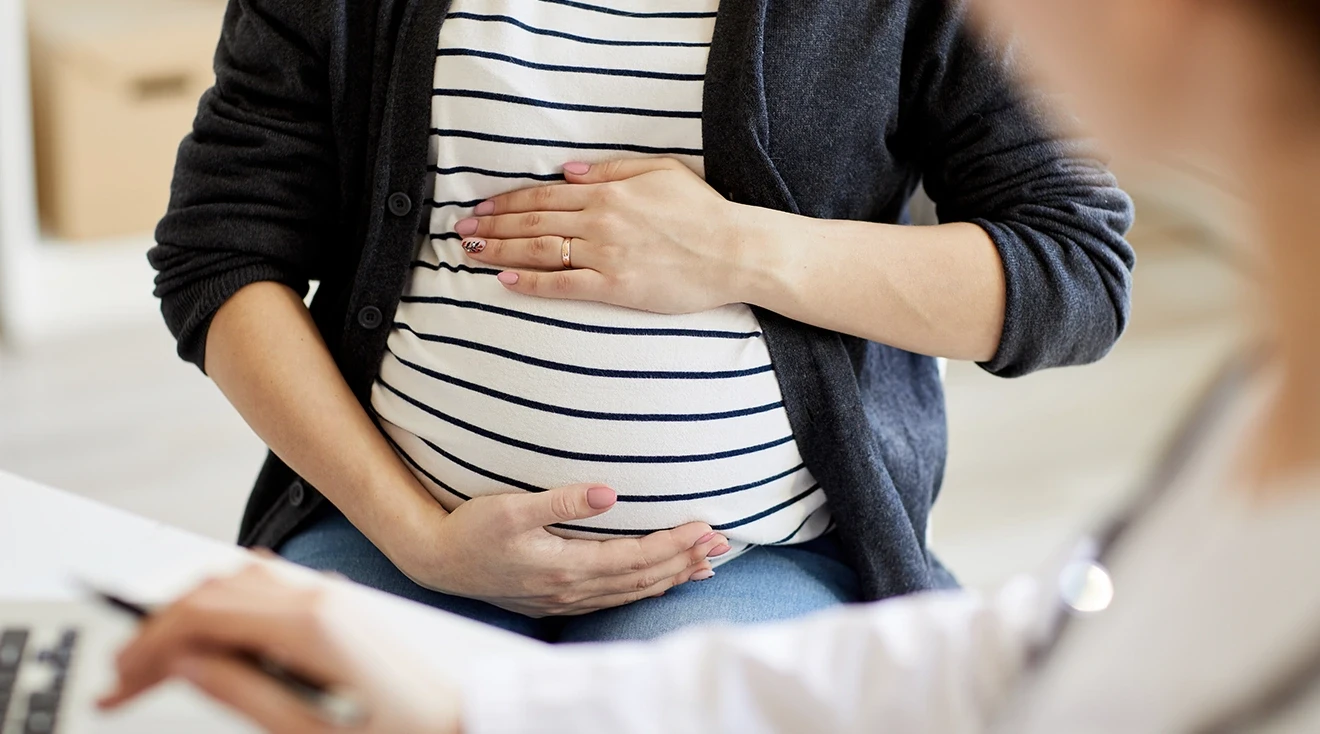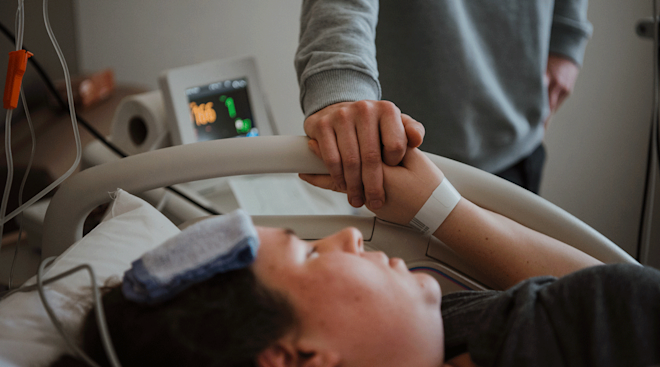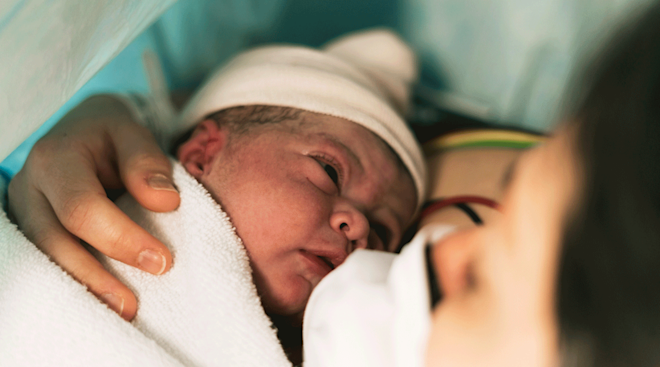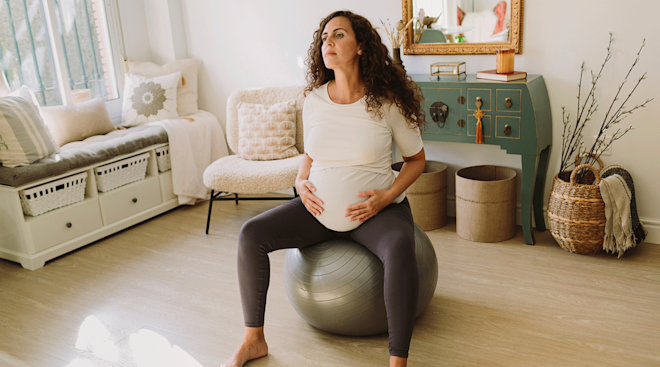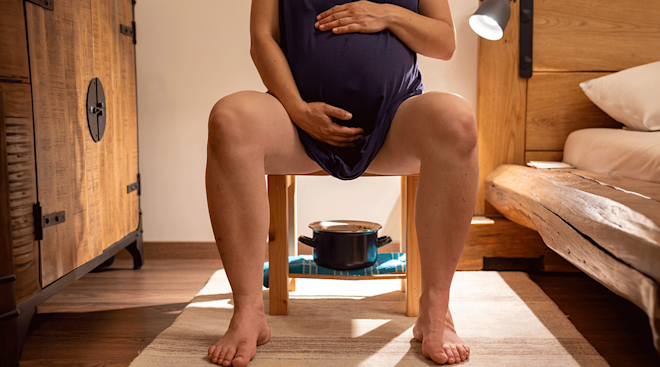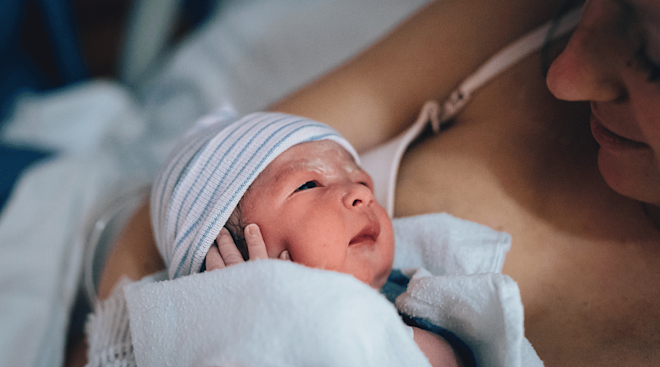What to Know About Group B Strep in Pregnancy
You probably never heard of group B streptococcus before getting pregnant—but suddenly it seems like a big deal. After all, the words “infection” and “anal swab” can be anxiety-inducing. Don’t worry, group B strep—or GBS—isn’t as scary as it sounds. Below, we break down what the presence of this bacteria means for you and baby, what the group B strep test involves and any necessary steps for proactive treatment.
Let’s clear this up right away: Group B strep is not a sexually transmitted infection. Rather, group B strep is one of many types of bacteria that live in the body and can be present in the vaginal and rectal area, notes the Mayo Clinic. It doesn’t cause serious illness, and it’s typically harmless in healthy adults. According to the Centers of Disease Control and Prevention (CDC), group B strep can come and go naturally in the body; you can test positive at some points in life, and negative at others.
Group B strep doesn’t pose a risk to you, but it can be dangerous for baby. In fact, group B strep infections are the leading cause of death and disability in newborns, notes the US Department of Health and Human Services. That may sound terrifying, but it’s also the reason why testing is so important. In order to protect baby, pregnant people are tested for Group B strep and treated accordingly.
Doctors aren’t entirely sure what causes group B strep or how it spreads. This live bacteria is very common—just like any other bacteria in your body. Some people simply have it present in their gastrointestinal and genital tracts.
When first hearing about group B strep, most people are worried about having an infection, but Libby Mollard, PhD, CNM, WHNP, IBCLC, a certified nurse midwife and nurse practitioner at CHI Health Birth Center in Lincoln, Nebraska, clears up this common misconception: “I always tell moms that it’s normal and natural to have GBS as one of the many bacteria in your vaginal flora.”
Group B strep is typically not a cause for concern. Most people don’t even know they have it. Pregnancy is one of the few times in a person’s life where testing for GBS becomes necessary, as exposure can present a danger to baby during a vaginal birth.
How common is group B strep in pregnancy?
It’s pretty common for pregnant women to have group B strep. “About 1 in 4 women do at any given time,” notes Mollard. That means that 25 percent of pregnant people are walking around with this bacteria. Rest assured that your provider sees this often and knows exactly what to do for you and baby.
You might be wondering if anyone is at higher risk for getting group B strep. But Nicole Rankins, MD, an ob-gyn in Richmond, Virginia, says that there aren’t any identifiable factors that make someone more likely to have GBS.
On the other hand, if this isn’t your first baby and you’ve tested positive for group B strep in a previous pregnancy, doctors say that you have a 50 percent chance of testing positive again, according to the Royal College of Obstetricians and Gynecologists.
Typically, you won’t experience any symptoms of group B strep. People can carry the bacteria for years without knowing. According to the Cleveland Clinic, in very rare cases, some women report having frequent urinary tract infections.
Even though GBS doesn’t affect pregnant people, there’s the real possibility that this bacteria could get passed to baby during a vaginal birth. Healthy adults can handle group B strep without a problem, but newborn babies can get very sick from the bacteria. Testing and detecting the bacteria is the first step to keep baby safe.
Pregnant people can expect to take this test in the third trimester of pregnancy, some time between weeks 36 and 38. Essentially, the test involves a quick swab to get a sample from the vagina and rectum—and, don’t worry, it doesn’t hurt. “It’s very similar to the feeling of a Q-tip,” notes Mollard. “The swab goes into your vagina and then briefly over your anus.” Once the swab is done, test results are usually available in one to three days.
First, take a deep breath. It can sound pretty scary, but a positive test result will not drastically affect your birth plan. It’s not your fault, and you did nothing wrong. Proactive steps will be pretty simple: Your provider will recommend that you get antibiotics during labor. “This will help prevent transmission from Mom to baby. GBS infection in babies is rare, but can be very serious,” Rankins explains. Treatment isn’t given before labor, due to the bacteria’s ability to grow back quickly, notes the CDC. Once in labor, you’ll be given antibiotics directly through an IV. “And, yes, the treatment is completely safe,” reassures Rankins.
If you’re group B strep positive and having a planned c-sectIon, you likely won’t need antibiotics. As a precaution, you’ll still be tested in case you go into labor before your scheduled c-section, but treatment shouldn’t be necessary since baby won’t get exposed to the bacteria via your vagina and rectum.
Can you retest for group B strep?
First-time parents might find it surprising that once you test positive for group B strep, you won’t get retested again during pregnancy, even though the bacteria is known to come and go. “If you test positive for GBS, you are colonized and a retest (even if negative) may be inaccurate,” says Mollard. If GBS is detected, it’s best to assume you have it and move forward doing everything necessary to reduce baby’s exposure during birth.
In all likelihood, a case won’t go undetected; getting a group B strep test done between weeks 36 and 38 of your pregnancy is the best way to avoid this possibility. That said, it is possible to go into preterm labor (before 37 weeks) without having been tested for group B strep. “In this case, you’ll automatically be given antibiotics as a precaution,” explains Rankins.
Group B strep won’t affect baby in-utero, but there are potential risks if baby is exposed to the bacteria during a vaginal delivery. If there’s any suspicion that baby has an infection after birth, they’ll be tested and given a group B strep infection treatment with antibiotics through an IV. “The most common complication is sepsis, which is an infection in the bloodstream. But GBS can also cause pneumonia and meningitis,” notes Rankins.
These serious infections are split into two categories: Early- and late-onset group B strep. The Group B Strep Support Organization notes the following about each:
- Early-onset group B strep: If baby contracts GBS during childbirth, and shows signs of infection within the first six days of life, it’s classified as early-onset GBS. Symptoms include having trouble breathing, blotchy skin, low blood pressure and low muscle tone (a floppy body). The good news: Testing for GBS during pregnancy and receiving antibiotics during labor will prevent most cases of early-onset infection.
- Late-onset group B strep: Late-onset GBS happens between 7 and 90 days after birth. Symptoms include irritability, trance-like expressions, pale skin and involuntary jerking movements.
According to the CDC, 94 to 96 percent of babies who develop group B strep survive. Recognition of symptoms and quick treatment are critical to successful outcomes.
Remember, group B strep is a normal bacteria that can come and go throughout your life. Yes, it might go away, but it can also come back. It’s important to know that testing positive means nothing for your overall health, and there’s no need to worry about it after pregnancy.
If you become pregnant again after a previous group B strep pregnancy, your provider may proactively give you antibiotics during labor to decrease the chance of exposure to baby.
From what experts know, group B strep can’t be prevented. Doctors don’t know what causes it or how it spreads. There’s limited evidence of efficacy, but some people take probiotics to prevent a GBS infection. The thought is that probiotics may increase certain types of bacteria in your vaginal flora to make it harder for group B strep to survive. “It may be worth a shot since probiotics are low risk and have other health benefits too,” says Mollard.
Understanding what Group B strep is—and making sure you get tested—can help you take precautions to protect baby. Testing positive for group B strep isn’t a big deal. You can still navigate through your pregnancy, labor and delivery with confidence and joy.
Please note: The Bump and the materials and information it contains are not intended to, and do not constitute, medical or other health advice or diagnosis and should not be used as such. You should always consult with a qualified physician or health professional about your specific circumstances.
Plus, more from The Bump:
Libby Mollard, PhD, CNM, WHNP, IBCLC, is a certified nurse midwife and women’s health nurse practitioner at CHI Health Birth Center in Lincoln, Nebraska. Mollard is also an assistant professor and co-coordinator of the women's health nurse practitioner program at the University of Nebraska Medical Center. As a mom of seven, she strives to give women the care and experience that she’d want as a patient.
Nicole Rankins, MD, is a board-certified ob-gyn who has spent the last 15 years helping thousands of women through pregnancy and birth. Rankins is also the host of the All About Pregnancy & Birth Podcast, where she gives expectant moms the confidence they need to have a beautiful birth experience. She received her medical degree from Eastern Virginia Medical School.
Mayo Clinic, Group B strep disease, September 2021
Centers of Disease Control and Prevention, Preventing Group B Strep Disease, October 2022
US Department of Health and Human Services, Strep B Test, November 2021
Royal College of Obstetricians and Gynecologists, Group B Streptococcus (GBS) in pregnancy and newborn babies
Cleveland Clinic, Group B Strep Pregnancy, April 2022
Centers of Disease Control and Prevention, Preventing Group B Strep Disease, October 2022
Group B Strep Support Organization, Symptoms of group B Strep infection in babies, 2023
Learn how we ensure the accuracy of our content through our editorial and medical review process.
Navigate forward to interact with the calendar and select a date. Press the question mark key to get the keyboard shortcuts for changing dates.

































